International research infrastructures membership fees financed by NRDI Office, and the public benefit of memberships
06 May 2021
Modified: 07 May 2025
Reading time: 14 minute(s)
INTERNATIONAL RESEARCH INFRASTRUCTURES
|
||
| Organisation, programme | Objective, characteristic feature | Benefits of the membership |
| ENVIRONMENT | ||
 ICOS ERIC Integrated Carbon Observation System Member since: 2022 Membership fee for 2022: EUR 34,636.68 |
ICOS ERIC is the main European research organisation for climate and atmosphere research. Learn more |
Access to the entire European measurement and research infrastructure. Learn more |
| HEALTH AND FOOD SCIENCES | ||
 BBMRI ERIC Biobanking and Biomolecular Research Infrastructure Member since: 2021 Membership fee for 2022: EUR 40,901 |
BBMRI ERIC aims to promote the development of new, effective therapeutic treatments by aligning the needs and opportunities of researchers, the industry and patients in need of treatment through related biomedical research. Learn more |
It unifies the activities of the individual biobanks, creating a huge database for research. Learn more |
 ELIXIR European Life-sciences Infrastructure for Biological Information Member since: 2016 Membership fee for 2022: EUR 48,297 |
Its main objective is to create, develop and ensure access to existing (and future) sources of biological data. Read more |
Direct economic benefits in the research and development of pharmaceuticals, medicine, agriculture, biochemistry, biophysics and bioinformatics research. Learn more |
 EMBL European Molecular Biology Laboratory Member since: 2017 Membership fee for 2022: EUR 815,019 |
European intergovernmental research organisation dealing with life sciences (genetics and molecular biology), which plays a leading role in the integration of European life science research. Read more |
It provides opportunities for Hungarian researchers to conduct state-of-the-art research in life sciences and participate in training programmes. Learn more |
|
EuBI ERIC The European Research Infrastructure for Imaging Technologies in Biological and Biomedical Sciences – Euro-BioImaging Member since: 2016 Membership fee for 2022: 50,463 EUR |
Provides open physical access to a wide range of world-class biological and biomedical imaging technologies for researchers in life sciences. Read more |
Gives access for the domestic research community to the laboratories equipped with the most advanced technologies; while research help to better understand diseases from diagnosis to treatment, thus improving the overall health of the population. Learn more |
 ICGEB International Centre for Genetic Engineering and Biotechnology Member since: 1987 Membership fee for 2022: USD 40,300 |
The autonomous intergovernmental organisation aims to enable less industrialised countries to take advantage of the latest advances in biotechnology. Read more |
Hungarian researchers can apply for grants annually for high-standard biotechnological research projects (Collaborative Research Programme, CRP) as well as for PhD and Post-doc fellowships. Learn more |
| PHYSICAL SCIENCES AND ENGINEERING | ||
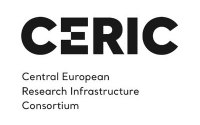 CERIC ERIC Central European Research Infrastructure Consortium Member since: 2016 Membership fee for 2022: 64,155 EUR |
The Consortium aims to provide external researchers with access to analytical, structural and imaging studies using synchrotron, neutron beam and other microscopic probes, and to the necessary material modification techniques, in the fields of nanotechnology, environment, materials science, life sciences and cultural heritage. Read more |
The domestic scientific value of CERIC ERIC lies primarily in its proactive involvement/participation in the Central European large-scale analytical research bloodstream in a highly organised multidisciplinary service framework. Learn more |
 CERN European Organization for Nuclear Research Member since: 1992 Membership fee for 2022: CHF 8,580,300 |
The world's largest particle physics laboratory, which examines the building blocks and operation of the universe by using particle accelerators and detectors. The Large Hadron Collider (LHC) is now the world’s largest and most powerful particle accelerator. Read more |
Hungarian researchers gain access to a new, internationally unique large facility, which hosts half of the world’s particle physicists. Opportunity to make new results and discoveries in basic research in physics, which can lay the foundations of subsequent developments. Learn more |
 A Large Ion Collider Experiment Member since: 1989 and 2000 Membership fee for 2022: CHF 55,628 |
The ALICE heavy-ion detector is an experiment on the LHC ring focusing on the physics of strongly interacting matter at extreme energy densities where a new state of matter, namely the quark–gluon plasma (QGP) appears. Read more |
The contribution of Hungarian scientists to research results potentially open up new prospects for international cooperation and research. Learn more |
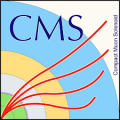 Compact Muon Solenoid Member since: 1990 and 2000 Membership fee for 2022: CHF 92,570 (with CMS Detector Upgrade II) |
The CMS is a general-purpose detector at LHC having a broad physics programme ranging from studying the Standard Model (including the Higgs boson) to searching for extra dimensions and particles assumed to make up dark matter. Read more |
The contribution of Hungarian scientists to research results potentially open up new prospects for international cooperation and research. Learn more |
 ELI ERIC Extreme Light Infrastructure Member since: 2010 Membership fee for 2022: 16,302,000 EUR |
The ELI ALPS and ELI Beamlines institutes are the first facilities in the world to enable the study of the interaction of light and matter at higher intensities with increasing time resolution, even in the ultra-relativistic range. Read more |
Participation as a host country in a pan-European research infrastructure whose research results can have a significant impact in the fields of medicine, the environment and socially relevant applications. Read more |
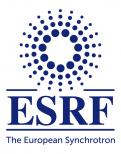 ESRF European Synchrotron Radiation Facility Member since: 2017 Membership fee for 2022: 105,546.88 EUR |
Special X-ray source which is fundamentally important for determining the atomic structure, electronic structure and magnetic properties of materials. It also offers measurement services in almost all fields of science. Read more |
ESRF stands out from the numerous synchrotron sources of the world in terms of test beam parameters, the number of measurement techniques, available equipment and the number of measurement channels, enabling Hungarian researchers to participate in cutting-edge research, and promoting multidisciplinary research and cooperation between researchers from various fields of science. Learn more |
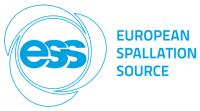 ESS European Spallation Source Member since: 2014 Membership fee for 2022: EUR 3,000,000 |
One of the largest ongoing investment in research infrastructure in the EU, which aspires to global leadership in neutron research. It will receive a major role in biotechnology and energy research, as well as in the fields of materials science and ICT Read more |
The future access by Hungarian researchers to internationally competitive and costly large research equipment provides great opportunities for the domestic R&D sector, while 70% of the membership fee is reinvested in Hungary in the form of orders to domestic suppliers. Learn more |
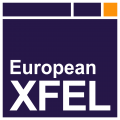 European XFEL European X-Ray Free-Electron Laser Facility Member since: 2009 Membership fee for 2022: EUR 1,342,345 |
Following full commissioning, the international research infrastructure is going to be Europe’s first and the world’s largest hard X-ray free-electron laser. Read more |
Access to internationally competitive, costly large research facilities enables Hungarian researchers to produce new results in areas such as molecular biology, genomics, medical diagnostics, therapeutic applications, nanotechnology and materials science. Learn more |
 ITER International Thermonuclear Experimental Reactor Member since: 2007 Membership fee for 2022: EUR 48,600 |
Its EU/EURATOM membership enables Hungary to take part in the large-scale research infrastructure cooperation aimed at fusion energy experiments producing marketable results. Read more |
Access to the internationally competitive, costly large research facility enables Hungarian researchers to produce new results in nuclear physics theory and application, supported by research grants and opportunities for industrial supply. Learn more |
| SOCIAL AND CULTURAL INNOVATION | ||
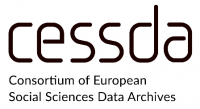 CESSDA ERIC Consortium of European Social Science Data Archives Member since: 2017 Membership fee for 2022: EUR 15,000 |
Virtual research infrastructure focusing on collecting, archiving, distributing and increasing the searchability of social sciences databases. Read more |
In addition to providing access to, connecting and standardising sociological databases, and improving data quality, Hungarian researchers and data archiving staff can also take part in professional training courses. Learn more |
 CLARIN ERIC Common Language Resources and Technology Infrastructure Member since: 2016 Membership fee for 2022: EUR 14,384 |
The infrastructure provides advanced digital language resources and tools primarily for scholars and social scientists. Read more |
The membership provides Hungarian researchers access to the most advanced language technology databases, while the integration of digital language databases gives access to remote archives for linguists, scholars and social scientists. Learn more |
 ESS ERIC European Social Survey Member since: 2016 Membership fee for 2022: EUR 22,500 |
The organisation biannually collects international comparative data about the demographic and social conditions of European societies, political and public preferences of citizens, and changes in social attitudes and action-guiding values. Read more |
The methodology used is also a model for national surveys, and there is no need to conduct new primary research in the topics covered by the ESS Learn more |
|
E-RIHS European Research Infrastructure for Heritage Science Member since: 2017 Membership fee for 2023: 0 |
The E-RIHS supports research activities aimed at the preservation, processing, documentation and management of cultural heritage. Read more |
It provides state-of-the-art equipment and services for various research communities to better understand cultural heritage at global level. Leard more |
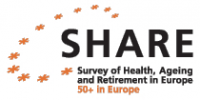 SHARE ERIC Survey of Health, Ageing and Retirement in Europe Member since: 2017 Membership fee for 2022: EUR 130,000 |
The multi-country, multi-disciplinary research network conducts surveys on the health and social implications of aging, as well as the potential public policy responses to these issues in a European comparison. Read more |
In addition to the wealth of information covered, the project’s scientific strength lies in its panel structure, which captures aging as a process and its far-reaching consequences. It also provides a unique opportunity for Hungarian social and health researchers to get involved in international research. Learn more |
Updated: 07 May 2025






